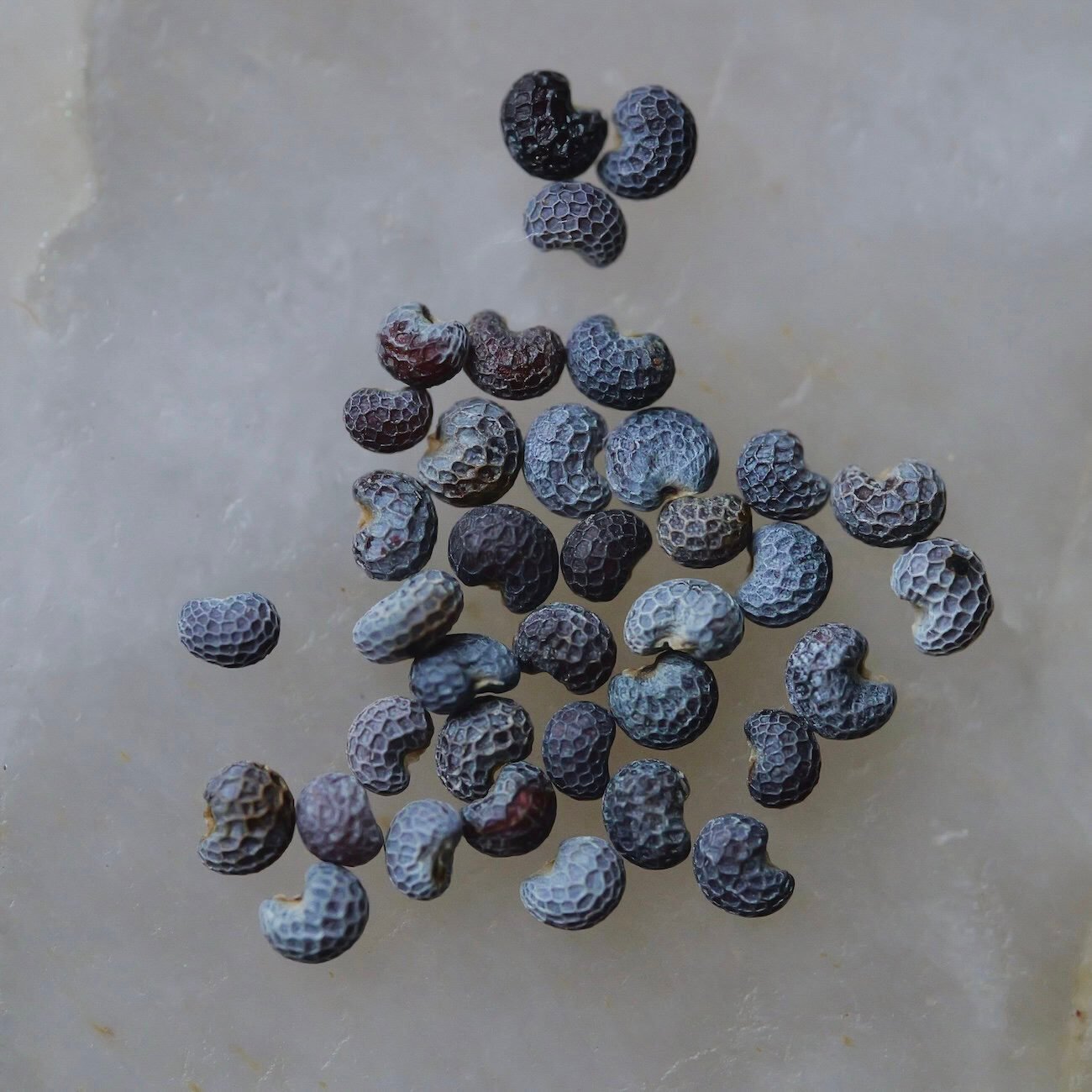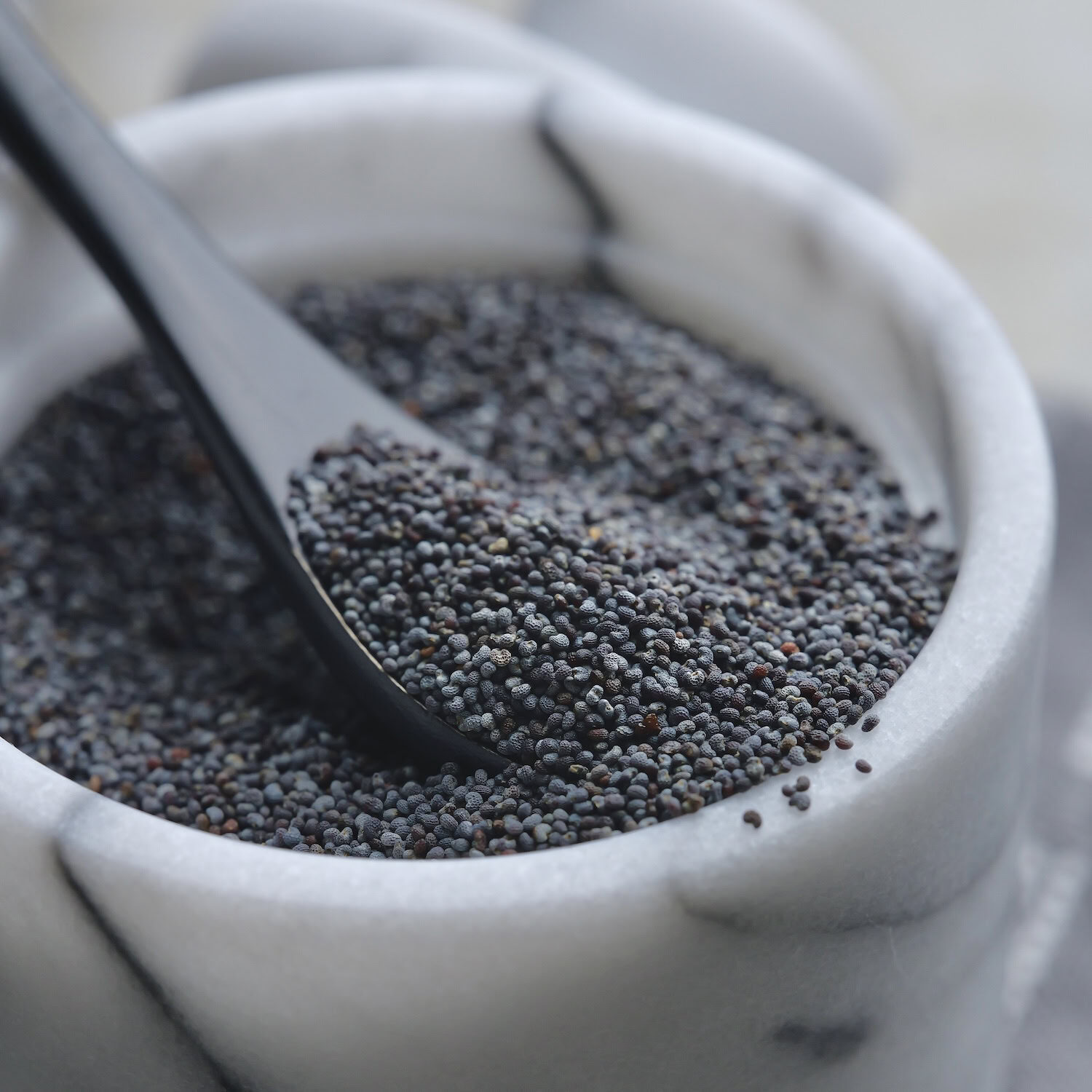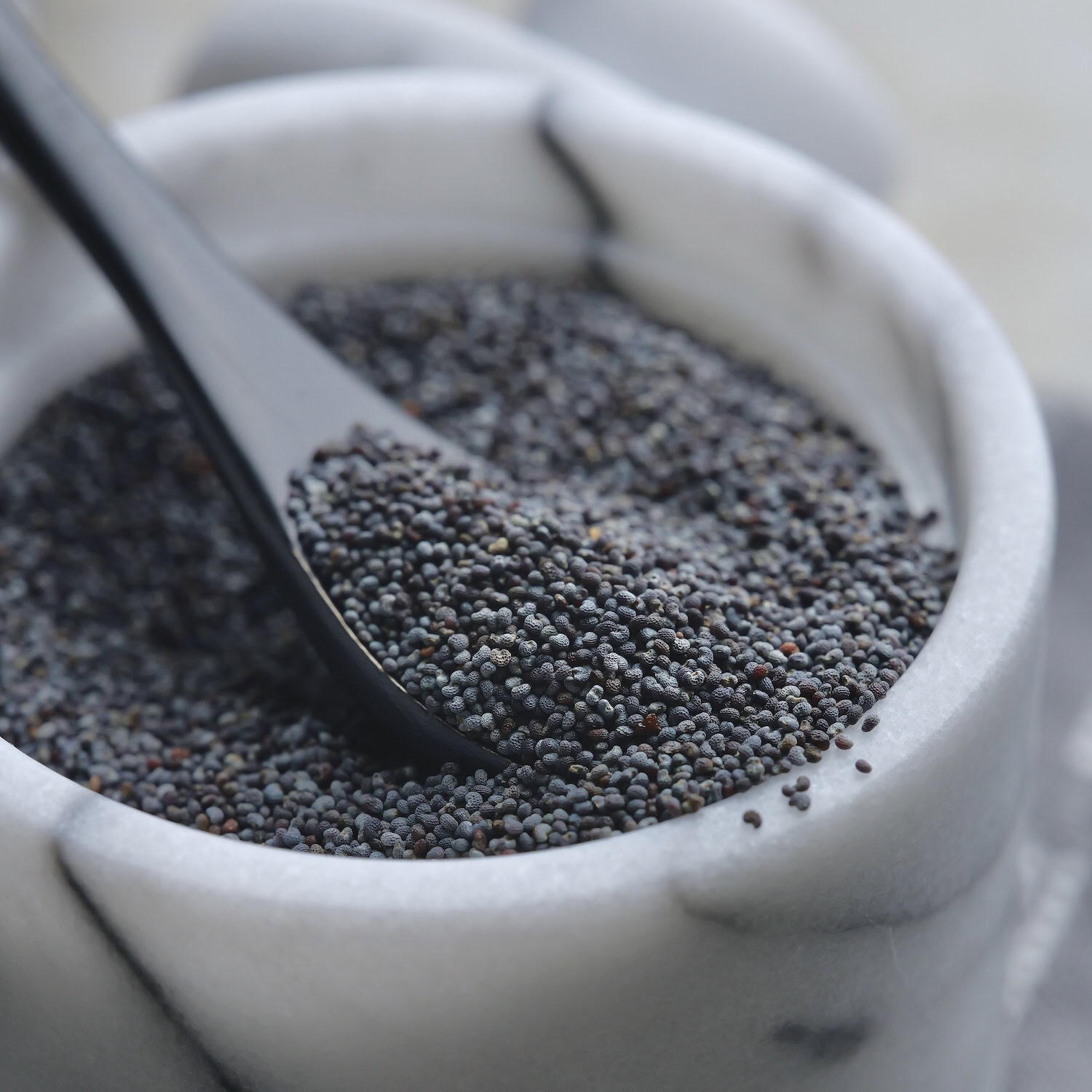Poppy Seed
Poppy seed is the spice produced from the seeds of the opium poppy (Papaver somniferum), an annual herb in the Papaveraceae family.

REGION OF ORIGIN
The Fertile Crescent. The opium poppy was cultivated as early as 3400 BCE in the ancient fields of Mesopotamia, including parts of present-day Iraq, Turkey, Syria, and Kuwait.
PART & COLOR
Poppy seeds are tiny and kidney-shaped. They mainly look blue-black and grey, with occasional shades of brown and faded orange. Their rough texture resembles moon craters.
HARVEST
Despite its delicate appearance, the opium poppy is surprisingly resilient. Depending on the climate, it's either sown in the fall or early spring, and the seeds are ready for harvest in late summer. Poppy seed pods develop after the flowers bloom, wither, and dry. Once the petals have fallen, the pods start to mature, resembling miniature vases. When they turn pale and start to rattle, the seeds are ready for harvest. Timing is critical as the pods will burst open if left on the plant. The seeds can be extracted by shaking them out, but this must be done with care as the dried pods are very brittle and can shatter, scattering tiny seeds everywhere.

FLAVOR & AROMA PROFILE
Poppy seeds have a delicate nutty-earthiness about them with light floral undertones. When you taste them, you pick up subtle almond and walnut notes and a hint of bitterness. As the seeds are toasted or baked, the nuttiness of their flavor and aroma deepens and they develop a sweet note.
When added whole to a dish, the seeds offer a nice crunch that enhances the texture of the other ingredients. When ground, they become creamier, almost buttery. This allows them to melt seamlessly into sauces, fillings, and spreads with a richer flavor than when whole.
CULINARY USES
Poppy seeds are perhaps most known for laying on top of pastries. Who doesn’t love a good lemon poppy seed muffin? From bagels and breads to strudels and cakes, baked goods are their wheelhouse. But they can do more than that.
Toss them over salads and roasted veggies. Sprinkle them over freshly cut fruits like oranges, grapefruit, berries, and kiwi a textural contrast and visual appeal. Grind and blend them into creamy dips and sauces. They can also be pressed to extract their oil, which is then used in dressings or as a finishing oil to drizzle over cold dishes.



